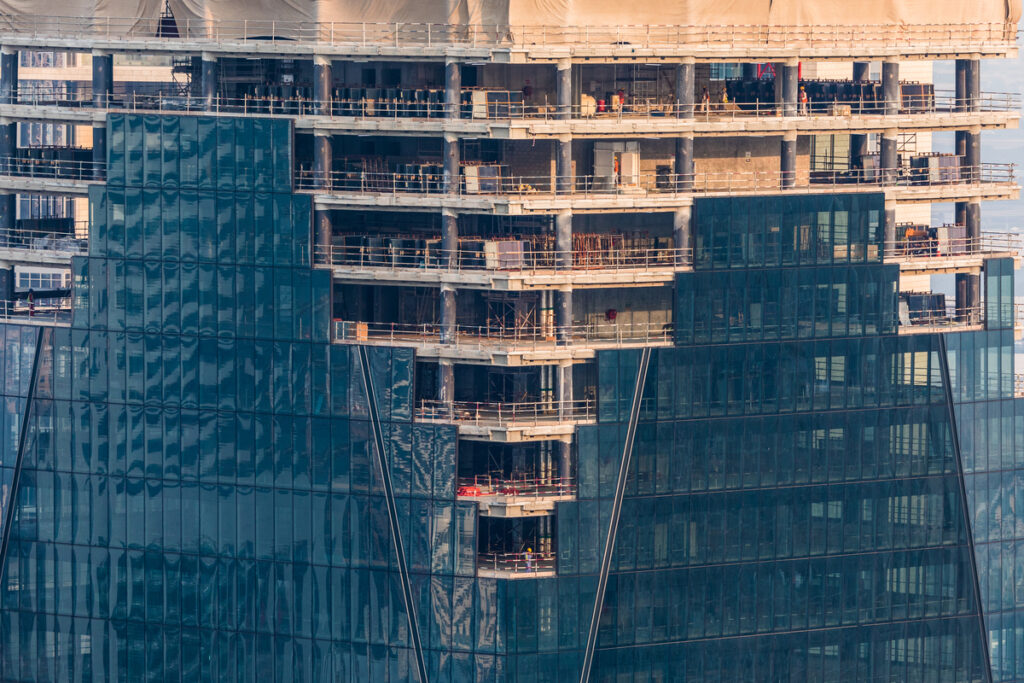Exclusive Neuroject Article: To create magnificent structures, builders have long depended on carefully crafted sets of blueprints. However, productivity has remained a major worry as the construction sector quickly digitizes to meet the increasing needs and complexity of modern projects.
For many years, project delays and overspending have been the main causes of the industry’s growth percentages lagging behind the overall global economy.
Research indicates that rework makes up about 30% of the work that construction companies complete, which equates to 5% of the contract value of a project on average.
BIM projects technology has become more widely used throughout time as a means of preventing rework and cost overruns.
This is mostly due to the development of 3D modeling and gaming-powered software, which made full 3D blueprints a reality. BIM is becoming more and more essential, and companies that don’t assess and utilize its advantages risk being left behind in a market that is changing quickly.
Table of Contents
What is BIM?
General contractors, specialty contractors, and owners can digitally develop a project before construction ever starts thanks to BIM projects. Even though BIM approaches have been used in the construction sector for more than 20 years, many businesses still don’t fully profit from BIM projects since their software point solutions aren’t used.
Rework can be very expensive; industry statistics from the Association of General Contractors and the American Institute of Architects indicate that the average cost of a single design conflict is $1,500. By providing dependable access to 3D models and enabling superintendents, foremen, and tradespeople to perform at their highest level, BIM lowers rework and keeps projects moving forward.
However, 3D BIM is just the tip of the iceberg in terms of what this technology can do. Building information modeling is being replaced by building information optimization with augmented BIM projects:
- 4D BIM for scheduling
- 5D BIM for cost and material estimations
- 6D BIM for sustainability
- 7D BIM for facility management
- 8D BIM for occupational health
Adding in other cutting-edge technology like virtual reality and computational design allows you to build a modeling environment that is even more immersive and produces information even more quickly.

Benefits of BIM in Construction Projects
In the AEC sector, BIM projects have become the talk of the town in recent years. However, there’s a lot of misinformation regarding BIM projects in construction and its potential benefits for contractors. Although 3D models are at the center of BIM, a prevalent misperception is that BIM is just a technology or that it only applies to 3D design.
The process of creating and managing all project information is called building information modeling (BIM), and the end product is a digital description of every aspect of the physical project. Although BIM is typically connected with preconstruction and design, it is beneficial throughout the whole project life cycle, even after the structure is finished.
With the use of building information modeling, many inefficiencies and issues that occur during the construction process can be avoided by BIM projects virtually before they are physically erected.
1. Better Collaboration and Communication
Paper drawing sets do not provide sharing, collaboration, or versioning, while digital BIM projects do. Cloud-based systems, like Autodesk’s BIM 360, allow for seamless BIM collaboration between all project disciplines. Teams can exchange project models and plans together with the help of the BIM 360 ecosystem, giving all stakeholders involved in the design process access to project information.
Project teams can even bring the office outdoors with cloud access. Teams may review drawings and models both on-site and on their mobile devices with apps like Autodesk’s BIM 360 tools, giving them access to the most recent project information at all times.
Suggested article to read: What is BIM and Importance of BIM in Construction? Ultimate Guide 2024
2. Model-Based Cost Estimation
Model-based cost estimating, or 5D BIM, has grown as more AEC firms realize that having estimators involved early in the planning stage allows for more accurate building cost estimation. By automating the tedious process of measuring and applying prices, BIM projects like Autodesk’s Revit and BIM 360 Docs free up estimators’ time to concentrate on higher value variables like identifying construction assembly and considering risks.
3. Improved Coordination and Clash Detection
By identifying any MEP, internal, or external conflicts before construction starts, BIM enables you to more effectively manage trades and subcontractors. Will a steel beam and the electrical conduits collide? Are the doorways sufficiently clear? conflict avoidance is possible with tools like Autodesk’s BIM 360 Glue, which features automated conflict detection.
You can cut down on the amount of rework required on any given assignment by preventing conflicts. Using BIM, you can plan it out before you start construction on site. If you make it simple to evaluate and comment across disciplines, you can prevent last-minute adjustments and unanticipated problems.

4. Reduced Cost and Mitigated Risk
According to a McKinsey survey, 75% of businesses that have implemented BIM have seen an increase in return on their investment. However, if you use BIM to its full potential, you can save money in a variety of ways. A closer working relationship with contractors can result in reduced insurance rates, fewer overall variances, lower tender risk premiums, and fewer claim opportunities.
Having a more comprehensive project plan before beginning allows for increased prefabrication and lowers waste from leftover resources. Easily bolted into position, prefabricated pieces require less effort than on-site creation. Labor expenses related to errors in communication and paperwork are decreased. BIM and construction technologies are being used by many businesses to cut costs and minimize risk.
A single document repository like BIM 360 Docs and real-time collaboration help minimize the risk of any organization using out-of-date information in the face of a growing number of team members utilizing project data. Completing a successful, high-quality project requires that the appropriate information be available at the appropriate moment.
5. Improved Scheduling/Sequencing
Many of these advantages not only save money but also save time by shortening project cycles and removing delays in the building schedule. Design and documentation can be completed concurrently with BIM projects, and documentation can be readily updated to reflect new information, such as site conditions. Projects have a higher chance of being finished on time or early because of better collaboration and more precise planning and communication of schedules.
6. Stronger Facility Management and Building Handover
A model’s information also enables the building to be operated after construction is finished, generating a return on investment long after the project is finished. Facilities management and renovators can benefit from an accurate, continuous digital record of building information for the duration of the building’s existence by using construction software.
For use after occupancy, data can be sent to the building maintenance software that already exists. Contractors may change building handover by tying BIM data created during design and construction to building operations with a technology like Autodesk’s BIM 360 Ops. With so many advantages, building information modeling has emerged as a crucial tool for the construction sector. BIM projects enhance effectiveness at every point of the project lifecycle and beyond, increasing their chances of success.
The Applied Technology Group holds the status of Platinum Partner for Autodesk. ATG was first established in 1992 as a neighborhood computer services provider in North Little Rock, Arkansas. Since then, it has expanded to become a preeminent design technology partner, helping clients embrace and maximize the benefits of cutting-edge technologies to enable them to compete successfully in the AEC industry. Through relationships with 3DR, Autodesk, Leica, Microsoft, and Panzura, ATG works with clients across the Gulf South, Midwest, and Southwest.
Suggested article to read: What is 5D BIM? Comprehensive Guide 2024
Meet the World’s 10 Best BIM Projects
There is no longer any doubt that BIM projects are the newest trend. The AEC industry’s future is being defined by BIM technology. Numerous architecture, engineering, and construction firms have already expanded their portfolios to include several BIM projects. Building Information Modeling (BIM) has numerous uses that are helpful in all the different stages of building, including conception, design, planning, execution, and even beyond.
The longest bridges and the tallest buildings are both designed and built with the use of building information modeling. These are a few of the top BIM projects from across the globe. Let’s examine how BIM enabled their teams to produce amazing outcomes in the shortest amount of time.
1. Shanghai Tower, China
- Architects: Gensler
- Year: 2015
- Manufacturers: Kuraray

BIM technology is not only making the construction process easier, but it is also assisting designers in coming up with creative, environmentally friendly solutions. One of the world’s tallest green skyscrapers and one of the prime examples of successful BIM projects is the Shanghai Tower. This 121-story, 632-meter-tall structure is made up of nine stacked cylindrical neighborhoods.
It seemed only fitting that a project of this magnitude would include at least thirty consulting firms, with countless contractors and subcontractors tasked with working on various structural components. Building information modeling helped to achieve the project’s high level of coordination.
2. Statoil Regional and International Offices, Norway
- Architects: A-Lab
- Area: 117000 m²
- Year: 2012

What kind of building is appropriate for the new headquarters of the globally recognized petroleum corporation Statoil? A-Lab in Norway was asked about the topic, and they developed an “out of the box” solution.
The five “lamellas,” or blocks, that made up the entire construction, were stacked on top of one another. Each Lamella is three stories tall, measuring 140 meters in length and 23 meters in breadth. They are placed in this way to maximize natural light within the office spaces. But in 20 months, how can this be completed?
With the aid of BIM, naturally! Prefabricated off-site and then transported in, the majority of the building’s parts were constructed by 2500 workers representing 30 different nationalities. The project was completed more smoothly and on time thanks to BIM.
3. Nanjing International Youth Cultural Centre, China
- Architects: Zaha Hadid Architects: Zaha Hadid, Patrik Schumacher
- Area: 465000 m²
- Year: 2018
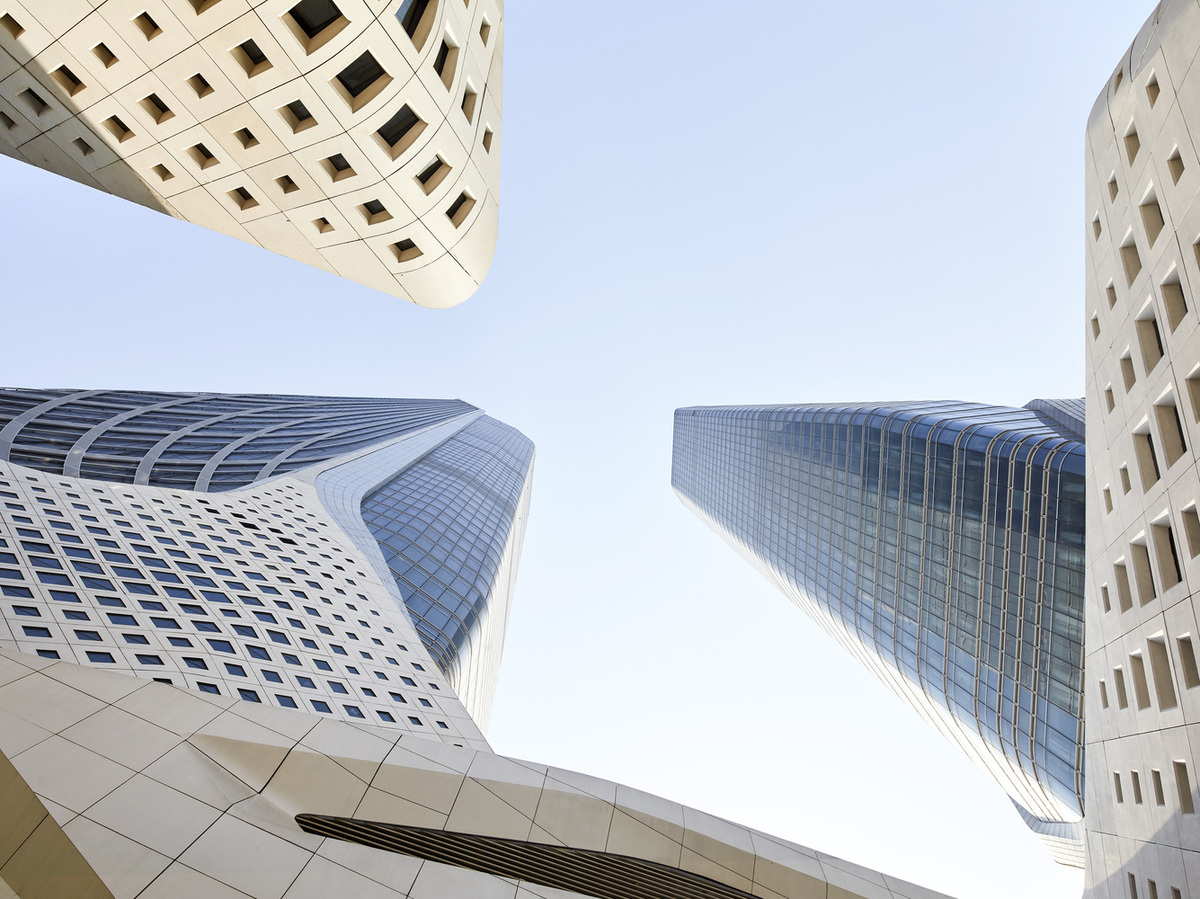
The Nanjing International Youth Cultural Center is another project on our list of the ten most inspirational BIM projects. It was developed by Zaha Hadid Architects, a prominent architecture business that Zaha Hadid founded. With two buildings housing offices, hotels, and other amenities, the construction covers 465000 square meters. The cultural center is located on a mixed-use plinth shared by the two skyscrapers.
BIM was utilized by experts at Zaha Hadid Architects during the whole of the building project. By building two buildings at the same time using a top-down and bottom-up approach, the crew was able to finish construction much faster. BIM made it possible for subject matter experts to collaborate and coordinate flawlessly, which was necessary.
The world is rich in creative constructions that emerged from the fusion of creativity and cutting-edge technology. We may anticipate seeing more durable and energy-efficient buildings, safer construction sites, and increased participation from all stakeholders as BIM projects continue to gain traction in the sector. Another trend that is growing is prefab construction, and BIM will be helpful there too.
4. The Len Lye Center, New Zealand
- Architects: Patterson Associates
- Area: 3,000 sq
- Year: 2015

One of the world’s greatest BIM projects, Patterson Associates employed BIM technology to meet strict budgetary constraints and high public expectations while building a center for artist Len Lye. Design improvements needed to be executed precisely, with every inch of accuracy being required.
The project benefited from BIM’s cloud collaboration function. From the beginning, all involved parties, including the design, construction, and MEP teams, had access to the building information. The functionality and operation of the building were tested using virtual simulations. The shared data environment ensured that everything happened on time.
5. Helsinki Airport, Finland
- Architects: ALA Architects
- Area: 43000 m²
- Year: 2021
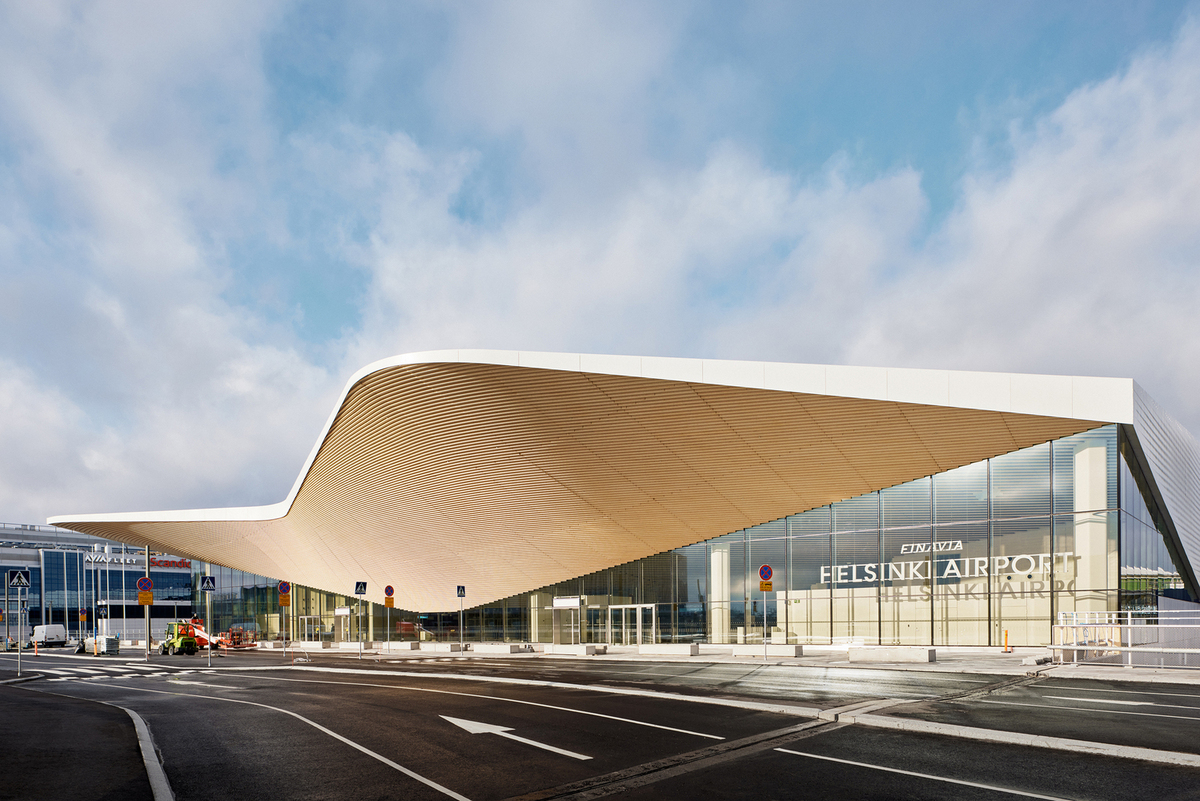
New jetways, parking areas, and a multi-modal travel center to house services under one roof were among the enhancements made to Helsinki Airport’s Terminal 2. Throughout the project’s phases, the project team was able to work together more efficiently and use 3D models for improved decision-making and visualization thanks to BIM.
Finavia Corporation, the owner, was also able to assess the viability and best location for solar panels with the use of technology. The project was successfully managed and carried out thanks in large part to BIM, which helped it win the Tekla 2022 Global BIM Awards in the Public category.
6. WeWork
- Architects: Linehouse
- Area: 5500 m²
- Year: 2016
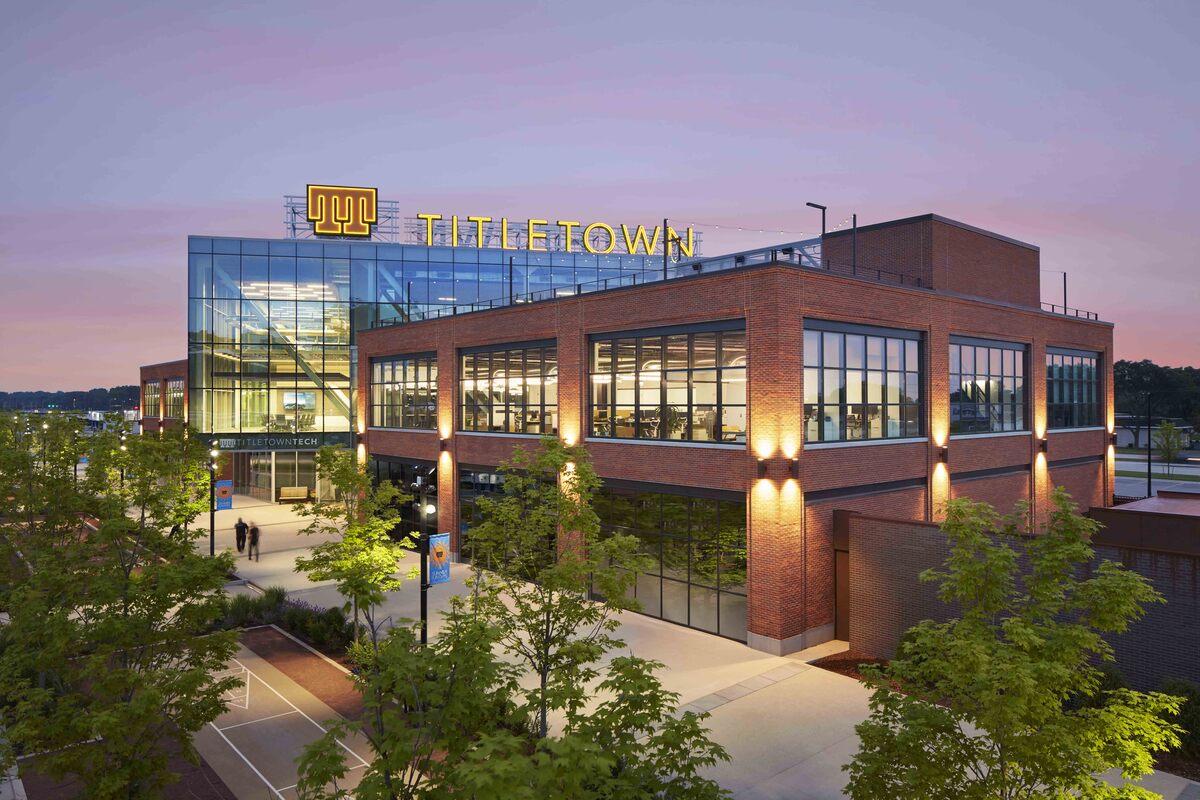
WeWork mandates the leasing of locations in which the pre-existing floorplates are erroneous and therefore requires astute spatial layout to suit its diverse clientele.
WeWork, which fits under the broad categories of interior design and spatial planning, is constantly repurposing its offices to meet the dynamic needs of its clients. This is where BIM spatial design iterative features and interior space planning tools come in help.
Scan To BIM capabilities are actively used by WeWork for their workplace documentation, where rich 3D data may be worked with in point clouds. After that, each iteration proceeds as appropriate, producing an output with a purpose.
7. Building B310 – Technical University Denmark (DTU)
- Architects: Christensen & Co Architects
- Area: 100,000 sqft – 300,000 sqft
- Year: 2019
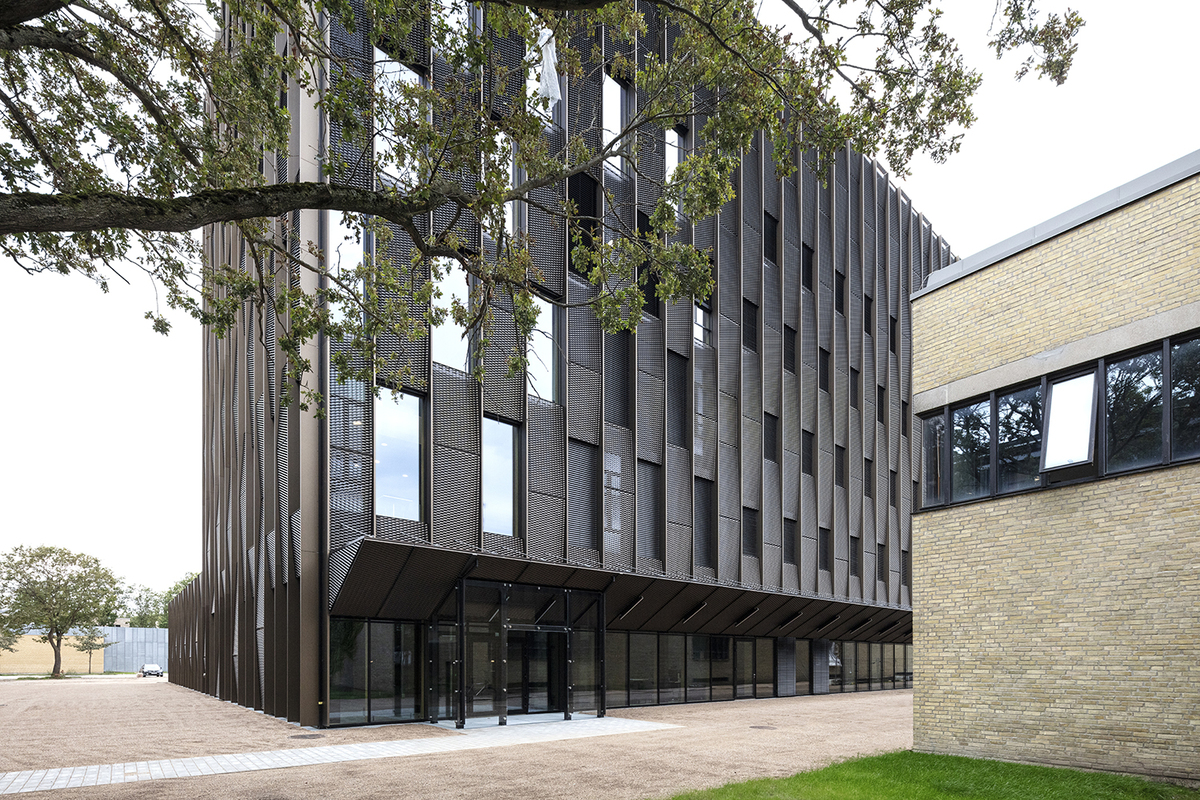
At the 2020 Architizer A+ Awards, Christensen & Co Architects won the Jury Winner title in the Architecture BIM projects category. Their six-story teaching facility at DTU Denmark was entirely digitally designed, all the way through the construction process. This dedication was evident even at the construction site, as workers used tablets equipped with digital designs to carry out their building.
Custom-designed research areas and multipurpose laboratories can be found in Building B310. In an open BIM environment, clients, contractors, and consultants work together to complete projects. Because every stakeholder participated actively in the project throughout its many stages, possible problems were found before they affected the build.
With its wide panoramic windows around the complex and its contemporary façade folded into a canopy, the building was designed to blend in with DTU’s overall look. Building B310 serves as an example of how project teams can verify the viability of suggested work using BIM, enabling architects to flourish during design phases.
8. TitletownTech
- Architects: SGA
- Area: 25,000 sqft – 100,000 sqft
- Year: 2019

In Wisconsin, TitletownTech is a 45,000-square-foot commercial center that was established as a partnership between Microsoft and the Green Bay Packers NFL team. Some Microsoft employees use the innovation center as their corporate office, and it also serves as a meeting place for entrepreneurs and local companies working on innovative BIM projects in the media, sports, and other industries.
In terms of style, the cantilevered glass box at the center’s entrance is reminiscent of a trophy case, paying homage to the area’s sustained sporting achievements. In addition, steel, bricks, and dark woods are used extensively as a reflection of Wisconsin’s industrial past and historic mill buildings.
SGA, an architecture and design firm, worked on TitletownTech using its Virtual Design and Construction (VDC) platform. Building information modeling is integrated into this software suite, allowing the business to continue using a model-first approach for design work.
9. The Clichy-Batignolles, Paris
- Architects: Accueil – Biecher Architectes, MAD Architects
- Area: 71,000 sq ft
- Year: 2016
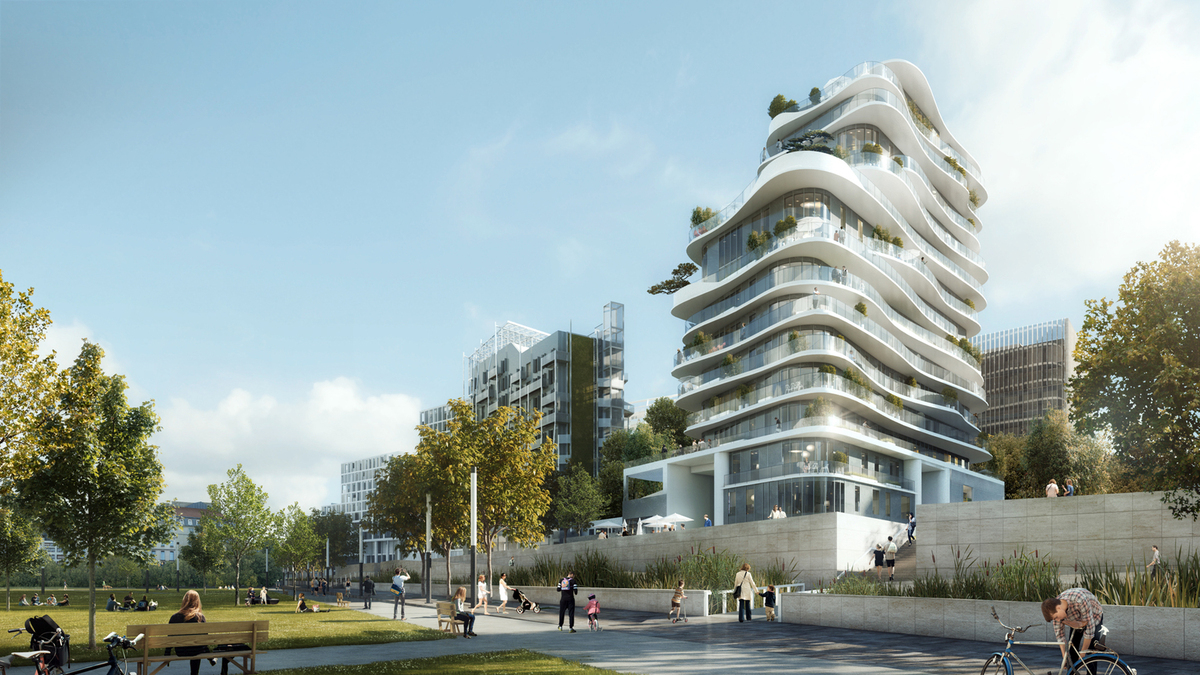
Paris’s revitalized neighborhood is quickly rising to the top of the global sustainable building, net-zero carbon city, Passivhaus, renewable energy, biodiversity enhancement, water-sensitive urban design, and waste management practices.
This will eventually include a theater, a movie theater, and a judicial center, all for a total of?505.7 million. One hundred and ninety thousand square meters of real estate is made up of homes.
All buildings are being constructed by the strict Passivhaus standard, which means that the annual energy consumption for heating is just 15 kWh per square meter of floor space, and the overall energy consumption is less than 50 kWh per square meter of floor area.
The project’s application of BIM presents a significant challenge in reducing energy consumption to reach net-zero carbon emissions.
10. Casa Piedra Blanca, Mexico
- Architects: Taller Gabriela Carrillo
- Area: 700 m²
- Year: 2020

One of the exceptional examples of BIM projects where you may learn how to improve the design and construction process is Casa Piedra Blanca. The project team used BIM to incorporate representational components into the architecture itself, including reports, Gantt charts, and progress reports.
They were able to do this to remove the usual ambiguity that comes with construction projects and obtain a deeper understanding of the house’s physical reality throughout the project stage. The project team was able to interact more successfully and efficiently thanks to BIM technology, which made the construction process more successful and simplified.
The Future of BIM Projects
The construction sector has already experienced a notable shift in the way projects are planned, built, and carried out due to the implementation of Building Information Modeling (BIM). This technology’s impact on the sector is only expected to increase as it develops further.
Enhanced Collaboration and Coordination: The capacity of BIM to enable smooth communication between different stakeholders, including architects, engineers, contractors, and owners, is one of its most important benefits. Probably, BIM projects will further integrate in the future, enabling project teams to communicate and coordinate in real time. This will increase overall project efficiency, cut down on errors, and save time.
Greater Integration of Emerging Technologies: Future developments in BIM projects will also see a stronger integration with other cutting-edge technologies, like augmented reality (AR), artificial intelligence (AI), and the Internet of Things (IoT). When these technologies are integrated with BIM, building projects can get the following advantages:
- IoT-enabled devices that monitor and collect data on building performance, enabling more informed decision-making and proactive maintenance.
- AI-driven algorithms that analyze data from BIM models to optimize designs, detect potential issues, and automate routine tasks.
- AR tools that overlay BIM models onto the physical environment, helping project teams visualize designs, identify clashes, and improve overall understanding of the project.
Increased Emphasis on Sustainability: Sustainability will become more and more important in the building sector as worries about resource depletion and climate change increase. BIM projects can facilitate more environmentally friendly design and construction methods, which can be a major factor in this change. For instance:
- BIM can help architects and engineers optimize building designs for energy efficiency, reducing operational costs and environmental impacts.
- Lifecycle analysis capabilities within BIM projects can facilitate better decision-making about materials and construction methods, minimizing waste and lowering a project’s overall carbon footprint.
- BIM projects can support the implementation of green building certification systems, such as LEED and BREEAM, by streamlining documentation and tracking processes
Expanding Use in Infrastructure and Facility Management: Although building construction projects have been the main application for BIM, other industries like infrastructure and facility management are starting to employ it as well. We may anticipate seeing greater usage of BIM in the future for:
- Infrastructure BIM projects like roads, bridges, and tunnels, allow for better design coordination, asset management, and maintenance planning.
- Facility management applications, where BIM models can serve as a comprehensive database for building assets, streamlining maintenance and operations processes.
Democratization of BIM Projects and Greater Accessibility: Small and medium-sized construction companies are expected to embrace BIM at a higher rate as it becomes more accessible and user-friendly. The following will help to democratize BIM projects:
- More affordable and scalable BIM software solutions that cater to smaller businesses.
- Cloud-based platforms enable easier collaboration and data sharing, reducing the need for high-powered hardware and complex IT infrastructure.
- Improved education and training resources, helping professionals across the industry develop the necessary skills to effectively use BIM.
BIM projects have a bright future ahead of them. We may anticipate BIM to become ever more essential to the planning, designing, and management of projects as technology develops. BIM projects will keep transforming the construction sector and reshaping the built environment for years to come by encouraging collaboration, incorporating cutting-edge technologies, encouraging sustainability, and increasing its application across industries.
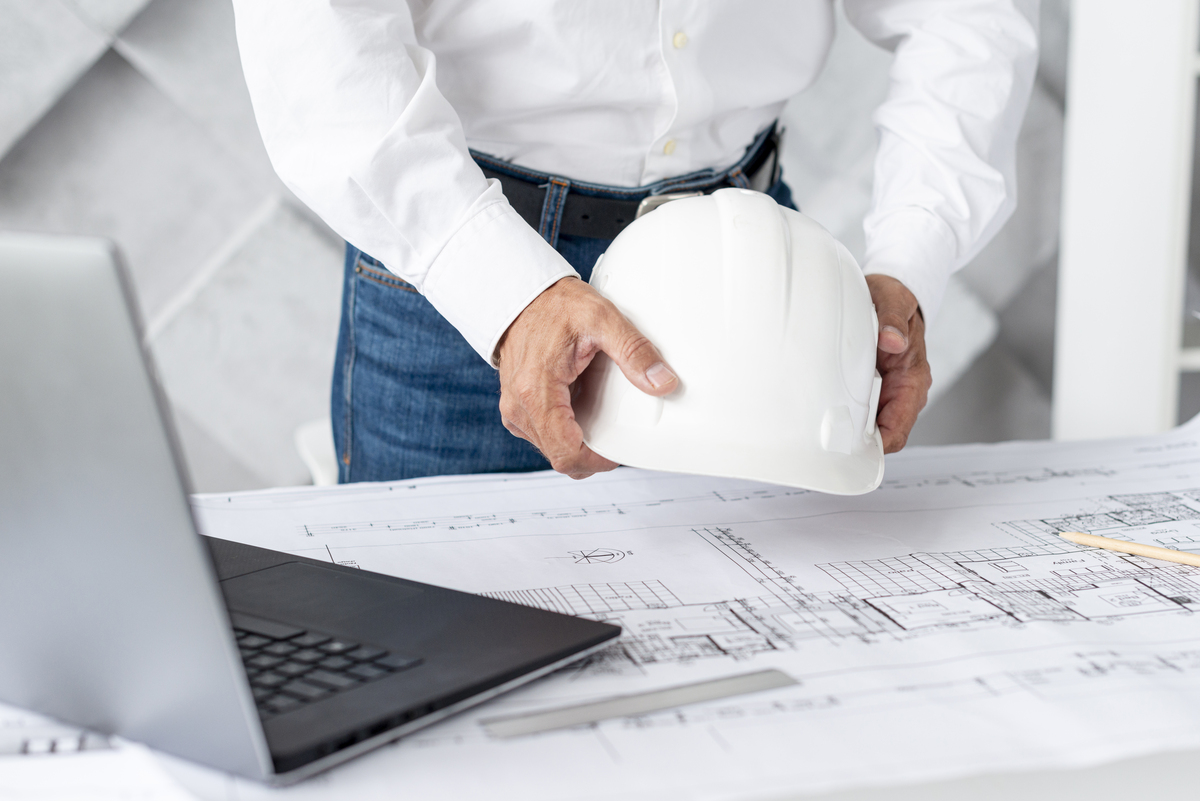
Conclusion
BIM is a digital depiction of the structural and operational elements of a structure. The procedure is cooperative and includes contractors, engineers, architects, and other relevant parties. By enabling a 3D representation of the building before it is built, BIM facilitates the identification of any potential problems or design flaws. To manage resources and track progress, BIM is also employed in the construction process.
Enhanced efficiency, lower costs, and better teamwork are just a few advantages of BIM projects in construction. With the use of BIM, a building’s representation can be more accurate, reducing errors and saving time and money. Because all stakeholders have access to the same model and may make changes instantly, BIM projects also facilitate improved stakeholder collaboration.
It is impossible to overestimate the significance of BIM in today’s projects. By enabling a more precise depiction of the building, lowering errors and costs, and enhancing collaboration and communication amongst stakeholders, BIM has completely changed the construction business. There are a lot of developments in BIM projects, thus the future is bright. For your next building project, if you haven’t already, it’s time to adopt BIM and begin to reap its benefits.
Suggested article for reading:
What Is Open BIM? Comprehensive Guide 2024
13 Most Impressive BIM Projects In World: 2024 Review
Resources:
Plannerly | Archdaily | Linkedin | Indovance | Novatr | Trimble | Autodesk | Itwocostx | Crosstechgroup | Atgusa | BIMdesigns | Faro | BIMconnect | Medium | BIMoutsourcing | Virtualbuildingstudio | Procore | Revizto | BIMspot
For the pictures: Freepik | Archdaily

